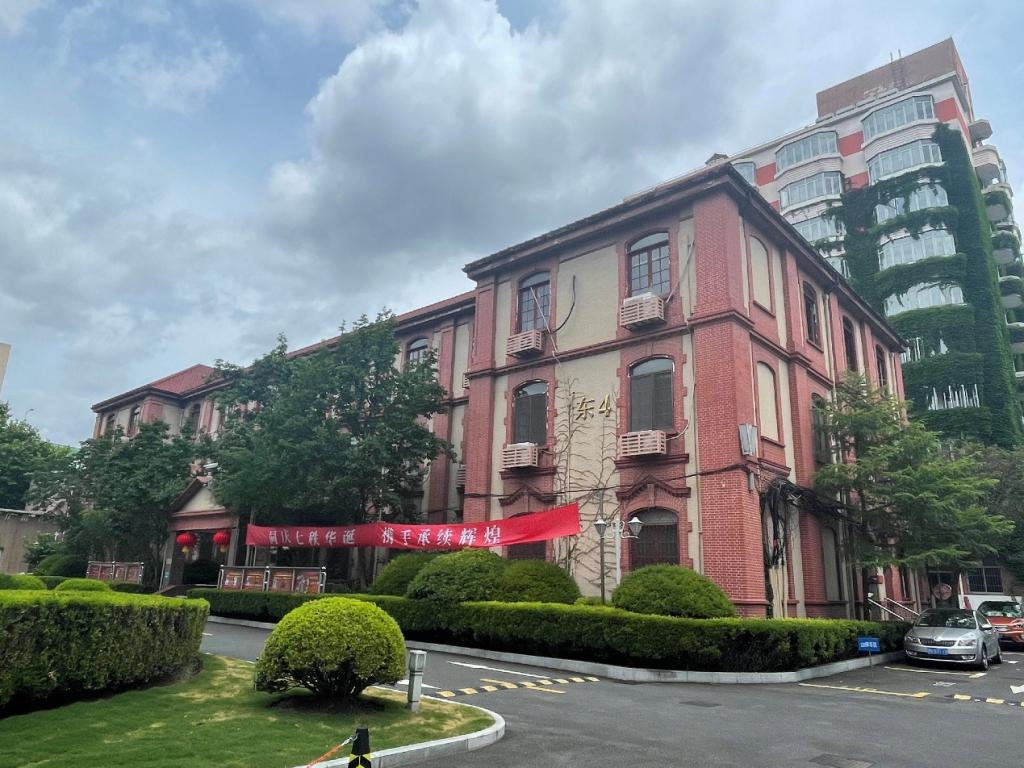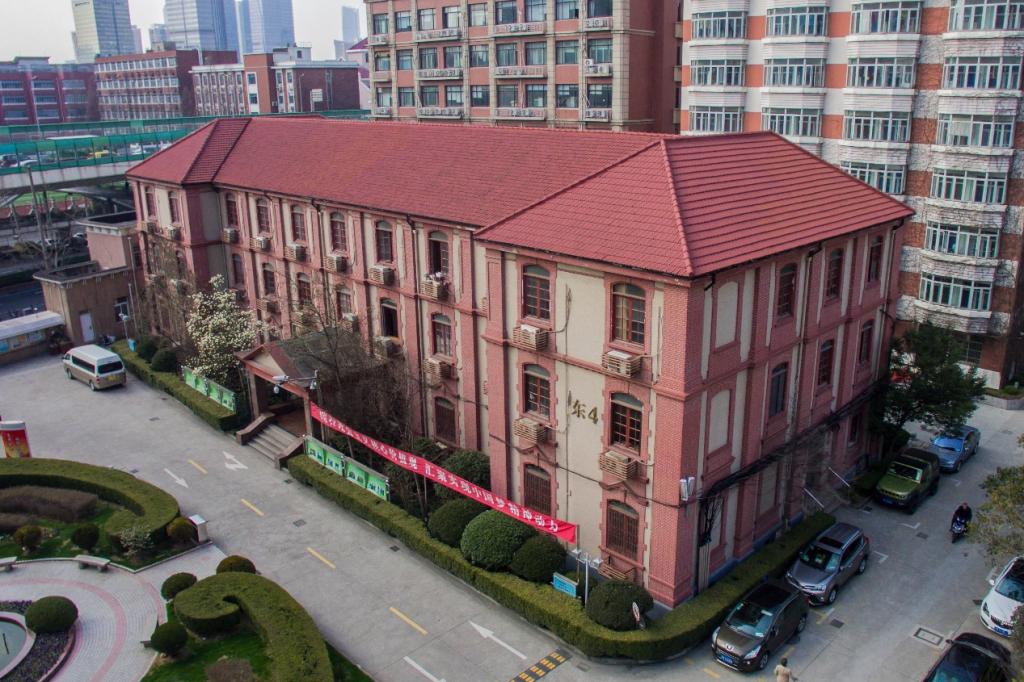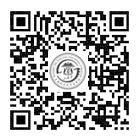

This is No. 4 Building (East), where Zhensheng Choir was founded. Built in 1916, it is a three-story brick-and-wood structure with a floor area of about 3,000 square meters. It used to be a student dormitory building of Aurora University. With a red-tiled slope top, arc-shaped window holes and blue-bricked pilasters, it forms part of the former site of Aurora University together with No. 1 Building (East) and No. 8 Building (East). In June 2009, it was listed as a “protected cultural relic building in Luwan District (merged into Huangpu District in 2011), Shanghai Municipality”.
In the White Terror period full of difficulties and dangers, the students of Saint John’s University, Tong De Medical College and Aurora University (the Three Old Universities) fought life-and-death battles with the imperialist forces by vigorously launching patriotic democratic movements and indomitably developing secret CPC branches as an important part of the student movements in Shanghai. CPC branches were set up in the above Three Old Universities in 1938, 1945 and 1946 respectively, and the CPC members at the universities then earnestly participated in the revolutionary movements.
In 1948, Zhensheng Choir of Aurora University was founded in this building. Every Saturday afternoon, the Choir members loudly and clearly sang revolutionary songs such as “Spring Ploughing”, “Unity Makes Strength” and “Cattle Herd Boy Wang Erxiao”, attracting a large number of students to join them. Zheng Kanglin, Secretary of the secret CPC branch, as well as Ding Yongning, Ge Fuguo and other CPC members often shared revolutionary theories round the clock with activists in student dormitories such as No. 4 Building (East). Their hard work led to a continuously increasing number of activists on the campus and many fans of the mimeographed leaflets Zhensheng.
In 1949, Communists and democrats were madly arrested by the Kuomintang forces entrenched in Shanghai, and progressive students of Aurora University School of Medicine also became stings in the eyes of the Kuomintang spies. To express support for the student movements in Shanghai, Tian Housheng, a student of Aurora University School of Medicine and a secret CPC member, and a group of progressive youths organized a grand patriotic music gala evening with Zhensheng Choir. Tian Housheng was therefore blacklisted by the Kuomintang as a member of Shanghai Students’ Federation. With the help of the underground CPC organizations, Tian Housheng escaped prosecution. Soon after that, Shanghai was liberated.
Meanwhile, under the leadership of the CPC, students of Tong De Medical College carried out revolutionary movements one after another. For example, as underground CPC members at this college, Wang Ximeng, Wu Dicang, Lin Jiamei and other health professionals made outstanding contributions to Shanghai’s liberation.

